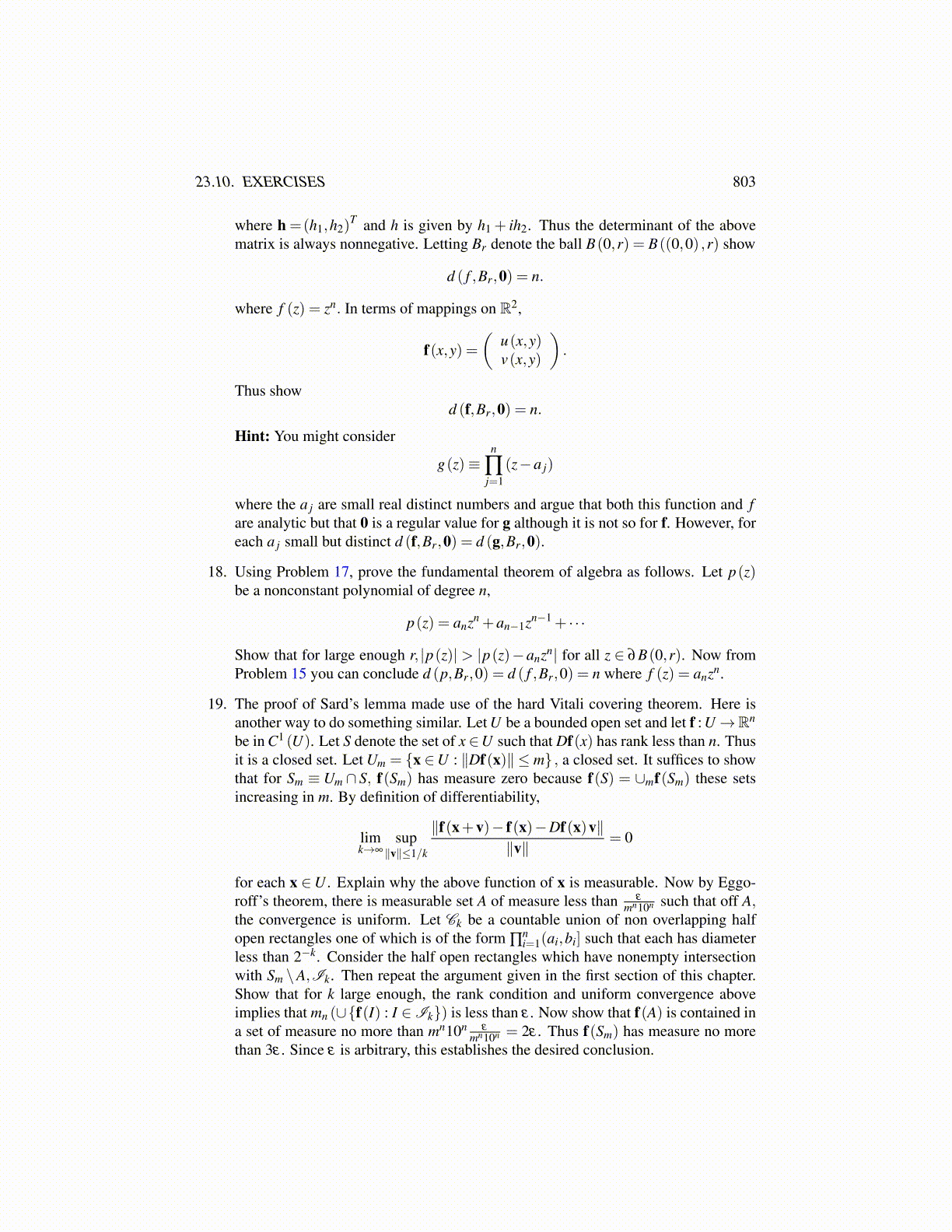
23.10. EXERCISES 803
In terms of mappings show 23.10.19 has the form(u(x+h1,y+h2)v(x+h1,y+h2)
)=
(u(x,y)v(x,y)
)+
(ux (x,y) uy (x,y)vx (x,y) vy (x,y)
)(h1h2
)+o(h)
=
(u(x,y)v(x,y)
)+
(ux (x,y) −vx (x,y)vx (x,y) ux (x,y)
)(h1h2
)+o(h)
where h =(h1,h2)T and h is given by h1 + ih2. Thus the determinant of the above
matrix is always nonnegative. Letting Br denote the ball B(0,r) = B((0,0) ,r) show
d ( f ,Br,0) = n.
where f (z) = zn. In terms of mappings on R2,
f(x,y) =(
u(x,y)v(x,y)
).
Thus showd (f,Br,0) = n.
Hint: You might consider
g(z)≡n
∏j=1
(z−a j)
where the a j are small real distinct numbers and argue that both this function and fare analytic but that 0 is a regular value for g although it is not so for f. However, foreach a j small but distinct d (f,Br,0) = d (g,Br,0).
18. Using Problem 17, prove the fundamental theorem of algebra as follows. Let p(z)be a nonconstant polynomial of degree n,
p(z) = anzn +an−1zn−1 + · · ·
Show that for large enough r, |p(z)| > |p(z)−anzn| for all z ∈ ∂B(0,r). Now fromProblem 15 you can conclude d (p,Br,0) = d ( f ,Br,0) = n where f (z) = anzn.
19. The proof of Sard’s lemma made use of the hard Vitali covering theorem. Here isanother way to do something similar. Let U be a bounded open set and let f : U→Rn
be in C1 (U). Let S denote the set of x ∈U such that Df(x) has rank less than n. Thusit is a closed set. Let Um = {x ∈U : ∥Df(x)∥ ≤ m} , a closed set. It suffices to showthat for Sm ≡ Um ∩ S, f(Sm) has measure zero because f(S) = ∪mf(Sm) these setsincreasing in m. By definition of differentiability,
limk→∞
sup∥v∥≤1/k
∥f(x+v)− f(x)−Df(x)v∥∥v∥
= 0